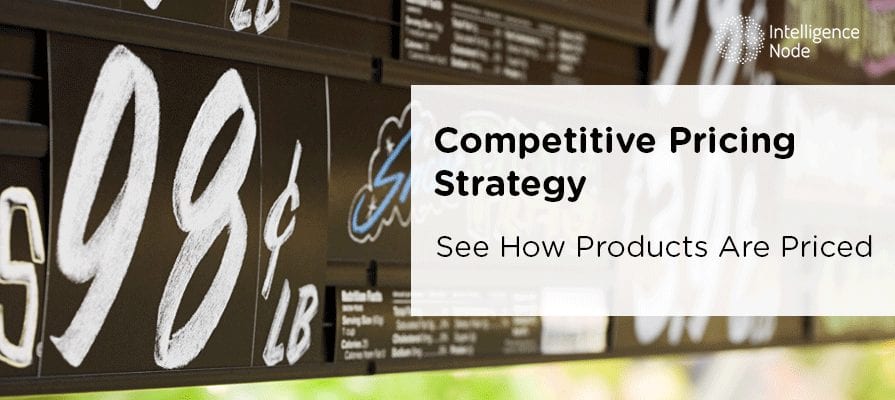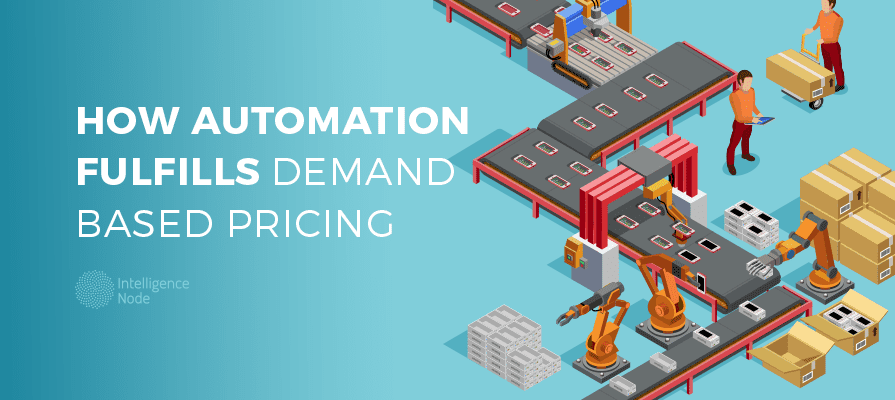An effective pricing strategy is essential to help a business maintain competitive pricing, such that it may set and offer prices that are in line with competition.
A business can pick from a variety of pricing strategies based upon a variety of different factors. A business can set a price to maximize profitability on each unit sold or on the overall market share. It can set a price to stop competitors from entering the market, or to increase its market share, or simply to stay in the market.
In fact, pricing is one of the most important components when it comes to creating marketing strategies. The price is one of the first things that a consumer notices about a product and is one of the deciding factors when it comes to their decision to buy it or not.
Analyzing Product Pricing in the Market
With the rise in eCommerce sales, and the friction-less comparison shopping digital commerce enables, competition in the market has gotten much more aggressive and real-time. Businesses need to keep an eye on their competitor’s pricing strategy while setting prices to get the much needed competitive edge in the market. Comparing prices online is easy and customers are well aware of the monetary value of a product. These factors are also important considerations while setting the right price in eCommerce.
Some of the factors that companies consider when setting prices are costs, competition, and price sensitivity. In order to ensure sustained profitability, firms have to set a price that: covers the production cost, contributes to company overheads costs, and delivers suitable profits.
Many competitors are eschewing the various pricing models and methods in favor of competitive pricing but setting pricing strategies based on competitors’ behavior isn’t an easy task.
This blog post deep dives into competitive pricing strategy, which is used by most companies around the world while also providing a glimpse of four major eCommerce pricing strategies.
What is Competitive Pricing?
Competitive pricing is a retail pricing strategy where brands and retailers set their product prices based on the prices of similar products offered by competitors. To stay competitive, companies often use dynamic pricing tools that automatically adjust prices in real-time based on market demand, competitor pricing, and other factors. This approach ensures that their prices remain attractive to customers and helps maximize sales and profits. For example, if a competitor sells a popular smartphone for $699, a retailer using a competitive pricing strategy might adjust its price to $689 as soon as the competitor’s price changes, ensuring it attracts price-sensitive customers and maintains a competitive edge. This strategy can also be used to evaluate prices and increase them in cases where competitor prices are higher, thus increasing product margins.
Competitive Pricing Strategy
With the ever-increasing competition in the retail market, competitive pricing is fast becoming one of the most sought after pricing strategies. When it comes to a competitive pricing strategy, the purchasing behaviour of customers is an important criteria. Once the product is part of a mature market, and fighting with a relatively high number of substitutes and competitors, the pricing actions of your competitors could well be a factor driving your profit. This is where setting prices according to the competitors becomes one of the most popular pricing strategies, also known as competitive pricing strategy.
You have three choices—price your product lower, higher, or same as your competitors::
1. If you’re planning to set the price above the price of your competitor, then you’d need to bring in new features and improvements in your product that would justify the increased price.
2. Pricing below your competitor’s price depends on your resources. If you can increase the volume without affecting the production cost to a great extent, then this might be a good strategy for you. However, there’s the risk of diminishing profit margin and you might not be able to recover your sunk cost and even face bankruptcy.
3. When you set a price equivalent to your competitor’s, then the differentiating factors cease to exist. The focus shifts to the product itself, and if you can offer more (and better) features at the same time, it’s a win-win for you, and your competitors will fall behind.
So, competitive pricing is the game to play
Competitive pricing intelligence demands that you have in-depth knowledge of your market and target audience.
Establishing a price based on competition requires a lot of effort. According to a recent survey, minor variations in prices can lower or raise profit margins by more than 20-25%. Competitive price analysis is essential to competitive pricing strategies. Let’s look at some competitive pricing examples to get a better understanding of this process.
Competitive Pricing Examples
The concept of competitive pricing best understood when there are only two competing parties. For example, if two companies manufacture detergent for washing clothes, both brands will try to keep their prices in line with each other and advertise their product to stand out in quality and features, to compete with the other brand.
Even big corporate giants sometimes resort to competitive pricing strategies when they want to increase market share. They have to set the price almost equivalent to their competitor, even if the production cost is high. In case the production cost is higher, they’d have to play around and adjust prices of packaging, advertising, and distribution.
Cost-plus Pricing Strategy
Cost-plus pricing strategy is one of the simplest methods of determining a price for your product. In this strategy, a prefixed profit margin is added to the total cost of the product which becomes your selling price. This eCommerce pricing strategy is not always the best way to establish the right price for your product as it is often determined with minimum research and does not consider consumer demand or competitor price strategies.
Demand Pricing Strategy
Demand pricing strategy is where prices are determined in correlation with demand to maximum sales for during high demand periods. Take the example of an airline company. During high demand periods like holiday season and weekends, prices go up with a rise in demand, and vice versa. A similar strategy is often followed by the hotel segment as well.
Penetration Pricing Strategy
This strategy to enter a new competitive market is often used. Sellers enter the market at a lower price point to generate demand and a consumer base and then increase prices once they are established.
Conclusion – Competitive Pricing for the Win
With almost 92% of shoppers comparing prices at some point or the other while shopping online, a lot of companies have to resort to competitive pricing to ensure their consumers do not move to another competitor for their low costs. In most cases, competitor intelligence and benchmarking tools are the key decision-making resources for determining competitive prices. With these intuitive pricing tools, retailers can optimize their prices in near real-time to take advantage of market movements while maintaining profitable margins and get an edge over their competition.





